Claim: Images show a Solar Tower to be built in Rio de Janeiro in conjunction with the 2016 Olympic Games.
Example: [Collected via e-mail, November 2010]
Solar Tower for the 2016 Olympic Games - Rio de Janeiro
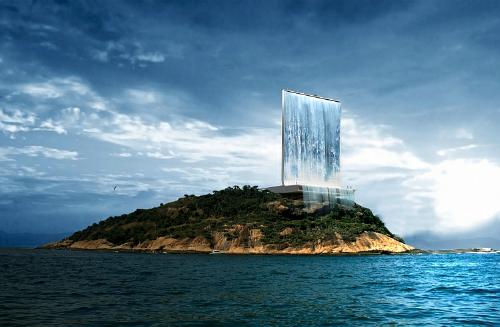
The challenge was to design a vertical structure on the island of Cotonduba that in addition to serving as an observation tower would become a symbol of welcome to newcomers in Rio either by sea or by air once it has been host city of 2016 Olympic Games.
Designed by RAFA firm headquartered in Zurich, Switzerland, it is called "Solar City Tower", this structure was chosen in response to the initial proposal and it has the potential to generate enough energy not only for the Olympic city, but also for part of the city of Rio.
Its design makes it store solar energy during the day, while the surplus energy produced is piped to pump sea water within the tower giving the effect of a waterfall outside. This water is reused simultaneously by turbines which are designed to produce energy during the night
These characteristics give it the epithet tower generator which is intended as a continuation of some of the resolutions taken during the Earth Summit United Nations in 1992 that took place in Rio and also promotes the use of natural resources in energy among these people.
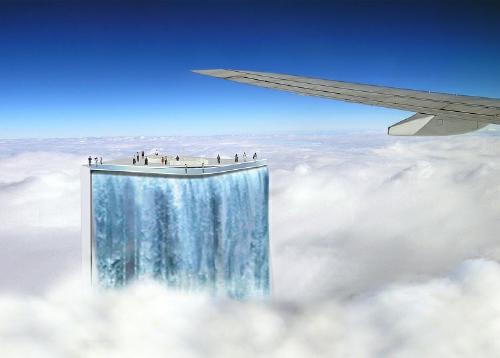
The tower also has an amphitheater, an auditorium, cafeteria and shops accessible on the ground floor where you can take an elevator that leads to various observatories and a retractable platform for the practice of bungee.
At the top of the tower, it will be possible to appreciate the scenery around the island where it will be erected and its waterfall will become a benchmark for 2016 and the city of Rio de Janeiro.
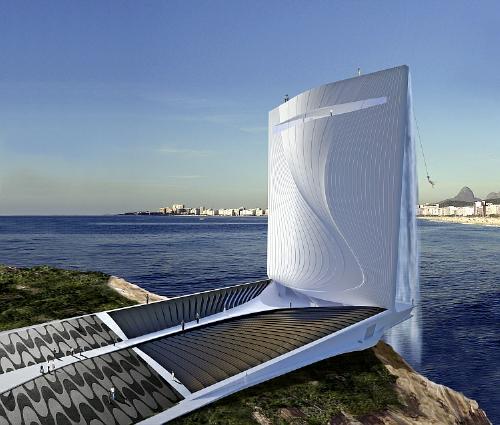
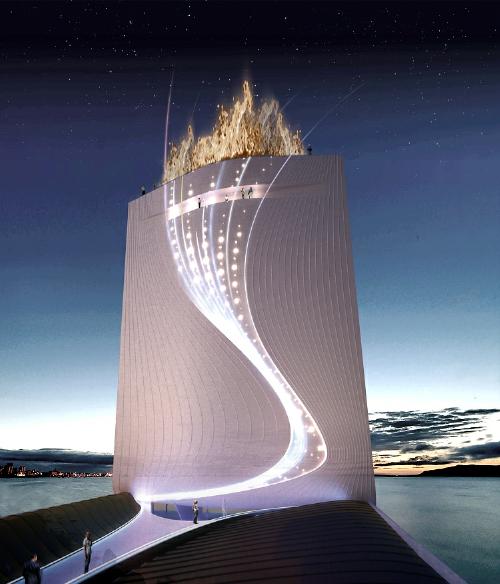
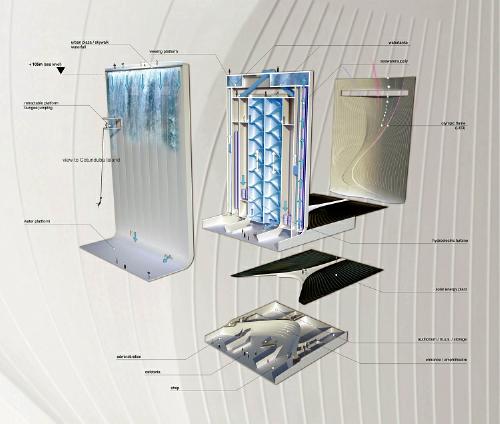
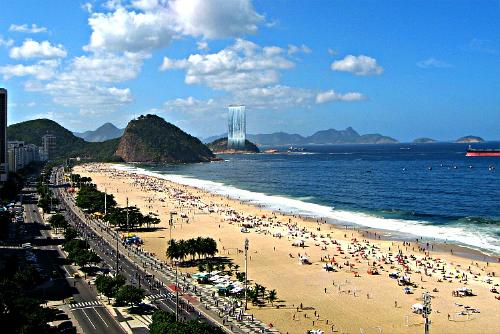
Origins: The text accompanying the images displayed above describes them as picturing a vertical structure to be built on Cotonduba Island, which would offer the aesthetic function of providing a striking welcoming signal to guests arriving in Rio de Janeiro for the 2016 Summer Olympics, as well as the practical functions of serving as an observation tower and storing solar energy (the latter to be used in part to pump water used to create the waterfall effect on the structure's exterior).
However, these pictures are just conceptual images; what they depict hasn't yet been built, may never be built, and hasn't yet been demonstrated to be technically feasible. They come from the web site of RAFAA, a Zurich-based architecture and design studio, which submitted them in 2009 as its proposal for a design competition. RAFAA described the concept behind its "Solar City Tower" design thusly:
The project consists of a solar power plant that by day produces energy for the city respectively the Olympic village. Excessive energy will be pumped as seawater Both entrance area and amphitheatre can serve as a place for social gatherings and events. The public spaces are also accessible from this point on. The cafeteria and the shop are situated beneath the waterfall and offer a breathtaking view. The public elevator takes the visitor to the observation decks and the urban balcony. The administration offices can be reached directly from the foyer. Its inner circulation is organised by an own entrance and the elevator. The semi-public spaces are located in the back area of the building; thus, they can be used separately. A retractable platform for bungee jumping is located on level +90.5. Long distance observation can be done from the observation deck on level +98.0. The urban balcony is situated at the top of the tower
The aim of this project is to ask how the classic concept of a landmark can be reconsidered. It is less about an expressive, iconic architectural form; rather, it is a return to content and actual, real challenges for the imminent post-oil-era. This project represents a message of a society facing the future; thus, it is the representation of an inner attitude. Our project, standing in the tradition of "a building/city as a machine," shall provide energy both to the city of Rio de Janeiro and its citizens while using natural resources. We hope to attain an international Olympic message with a political appeal. After hosting the United Nation’s Earth Summit in 1992, Rio de Janeiro will once again be the starting point for a global green movement and for a sustainable development of urban structures. It will perhaps even become a symbol for the first zero carbon footprint Olympic Games.
into a tower. By night, the water can be released again; with the help of turbines, it generates electricity for the night. The electricity produced can be used for the lighting of the tower or for the city. On special occasions, this "machine building" turns into an impressive wonder of nature: an urban waterfall, a symbol for the forces of nature. At the same time, it will be the representation of a collective awareness of the city towards its great surrounding landscape. Via an urban plaza located
Given that the 2016 Summer Olympics are little more than a year away, and RAFAA still says they have "no news at the moment" to report, it's exceedingly unlikely that visitors to Rio 2016 will be greeted by a Solar City Tower.
Last updated: 12 May 2015
